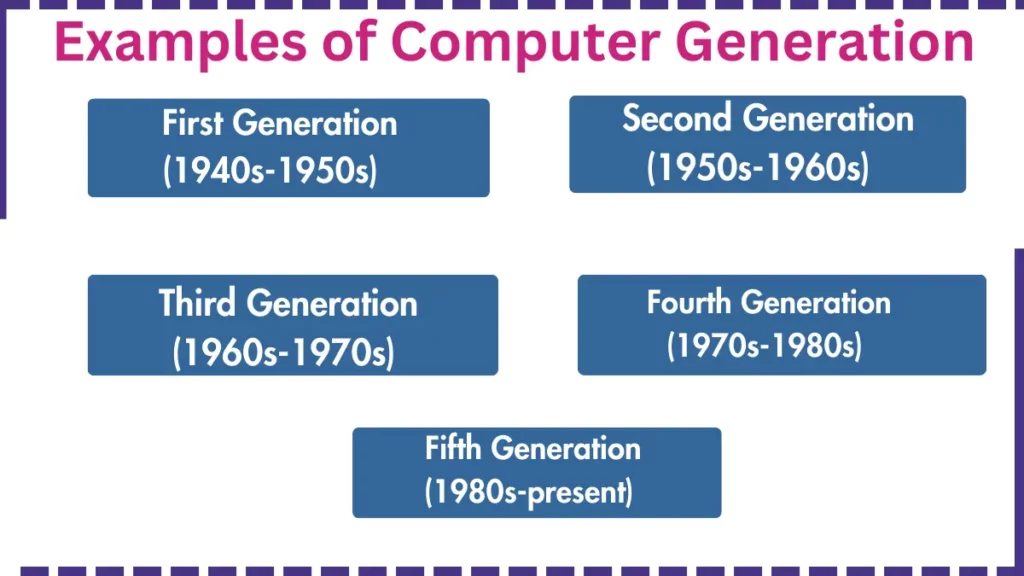It is very important to know the generations of computers to understand their development. There are five generations of computers, and in each generation, the performance, size, and capabilities of computers have improved.

Generation of computer 1st to 5th
The following Examples of Computer Generations
First Generation (1940s-1950s)
First-generation computers were built between the 1940s and 1950s. These computers were very large and worked on vacuum tubes. Due to the vacuum tubes, these computers took up a lot of space and used a lot of electricity.
These computers were very slow, and they generated a lot of heat to run. For example, ENIAC and UNIVAC were famous first-generation computers.
Second Generation (1950s-1960s)
Second-generation computers were built between the 1950s and 1960s. In this generation, transistors were used instead of vacuum tubes. Transistors were smaller, more powerful, and used less power than vacuum tubes.
This made computers smaller and faster. For example, the IBM 1401 was a famous second-generation computer.
Third Generation (1960s-1970s)
Third-generation computers were built between the 1960s and 1970s. In this generation, transistors were replaced by integrated circuits (ICs). ICs are small chips that contain thousands of transistors.
This technology made computers smaller, faster, and more reliable. This was the era when computers began to be made available to the general public. For example, the IBM 360 was a popular third-generation computer.
Fourth Generation (1970s-1980s)
Fourth-generation computers were made between the 1970s and 1980s. This generation saw the introduction of microprocessors. Microprocessors control the functions of the entire computer on a small chip. This resulted in a major boost in the speed and capabilities of computers. This was the era when personal computers (PCs) became common, and people started using computers in their homes. For example, the Apple II and IBM PC were popular fourth-generation computers.
Fifth Generation (1980s-present)
Fifth-generation computers have been made since the 1980s. This generation uses artificial intelligence (AI) and advanced technology. These computers are capable of thinking, learning, and making decisions like the human brain. This generation includes technologies such as robotics, nanotechnology, and cloud computing. For example, smartphones, robots, and AI-based systems are fifth-generation computers.
